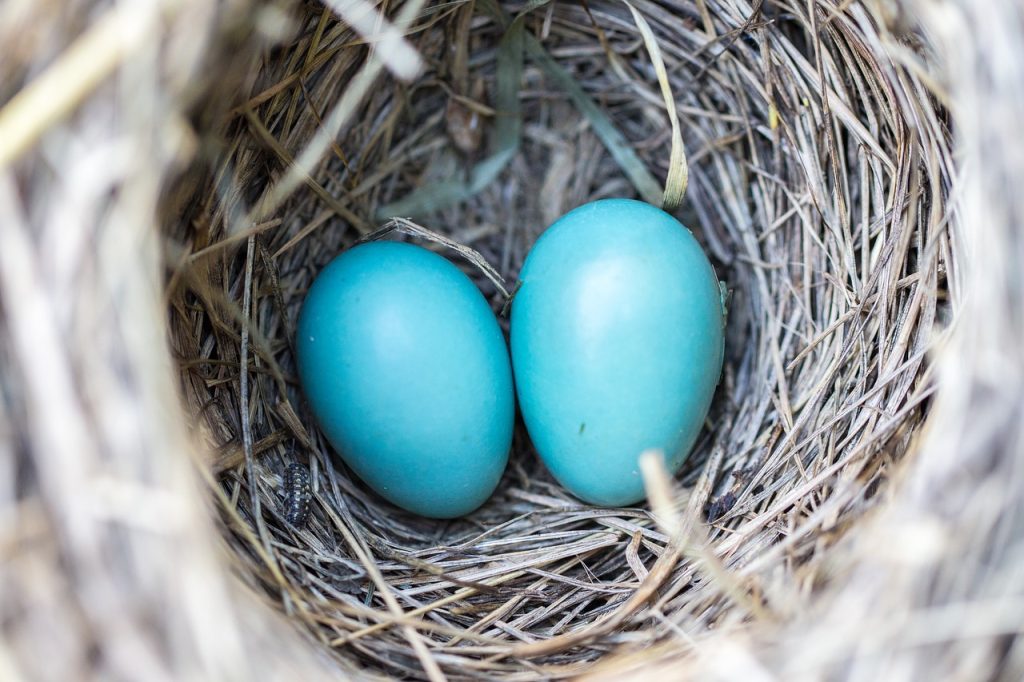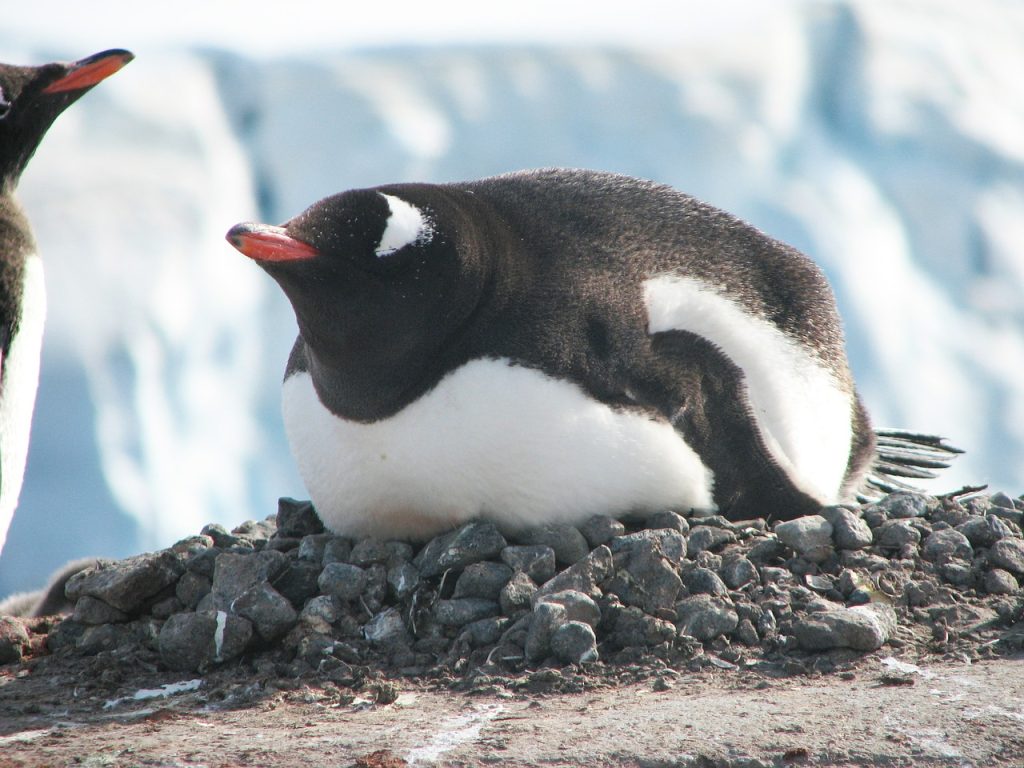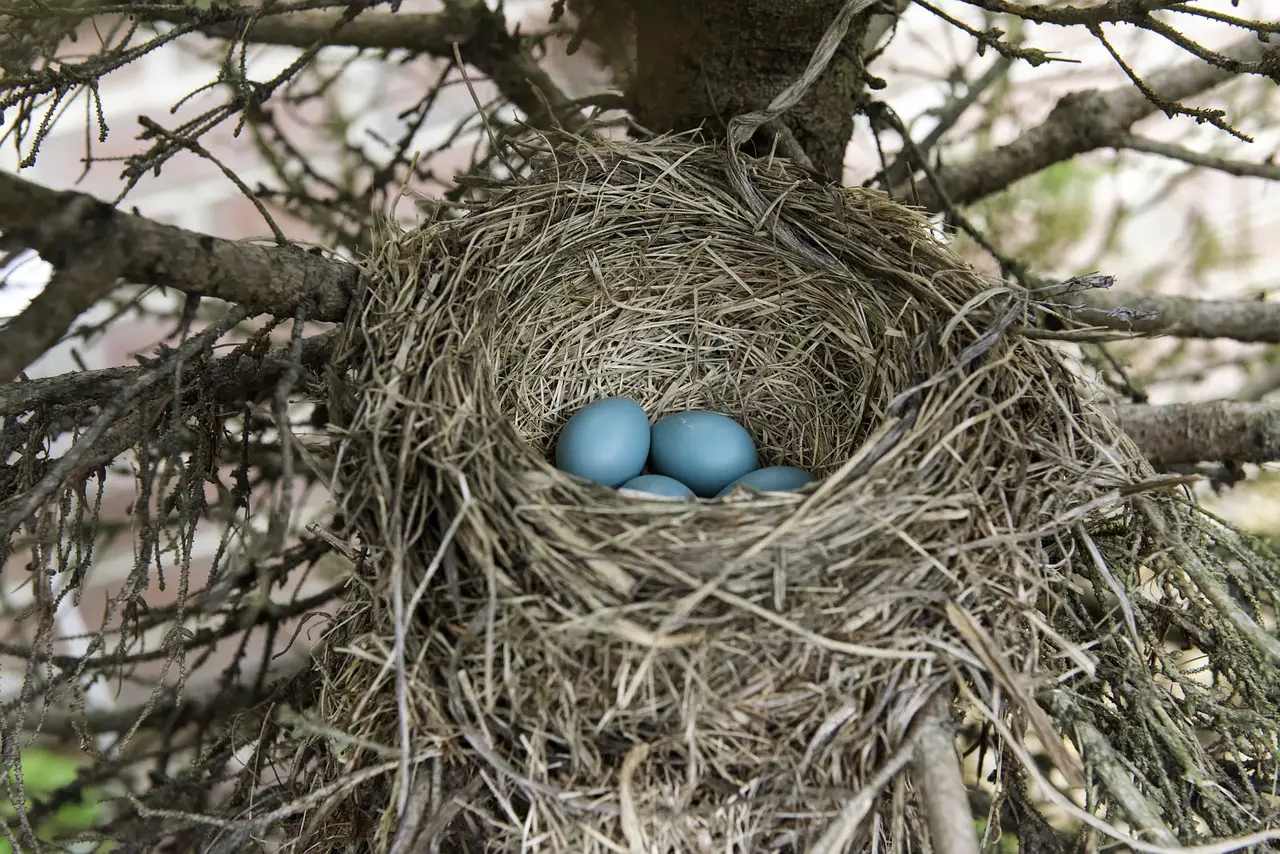You may have been taught that birds usually lay their eggs in nests when you were young. However, as you grow older, you will encounter other birds and wonder if they have the same nesting habits.
Most birds lay their eggs in a nest which serves as a safe place for eggs to hatch. Nests, like bird species, are incredibly diverse, and each one has a distinct purpose. Nests are made of different materials depending on the species. While some birds make nests from human-made materials such as yarn, paper and plastic, others use natural materials including twigs, fur, mud, leaves and grass.
Let’s look at different bird nests and how several bird species take care of their young ones.
There are several types of nests built by different species.
Do you know why birds lay eggs? Find out in this article I wrote

Cup Nest
Cup nests are shaped like the coffee cups we use, or in some instances, similar to a bowl. The different shapes depend on the size of the bird and the eggs it lays. Cup nests are typically located high in tree branches, with materials such as caterpillar silk, spider web, rotten wood and mud to hold the structure together. Some species even use their saliva to stick the branches together.
Do you know how long birds incubate their eggs? Find out here.
Adherent Nest
Adherent nests are stuck on a structure, such as a cliff, building or tree and are made of special clay consisting of the bird’s saliva and mud. A hole on one side is created and serves as an entry space for the mother to feed the young.
Platform Nest
Platform nests are found at very high places, like a tree or the sides of a cliff. Birds of prey, such as hawks and eagles, usually multiply this way. The nest also serves as a home for them to rest or to help see their surroundings. A few water birds construct their platform nests on shallow water and anchored to plants.
Do you know how bird eggs form? Find out here
Earth Hole Nest
Earth holes nests are called because they’re holes in the ground. Some particular bird species dig tunnels on the ground or use rabbit holes that have been abandoned for a while. These birds might make a nest consisting of grass and feathers for their eggs.

Ground and Mound Nest
Mound nesters will carve out a small hole in the ground for their eggs and are usually made from grass and natural materials that are found nearby. Penguins are a classic example of this- they collect small rocks and fashion them into a nest, so it’s protected from floodwater. Others, like flamingos, make mounds out of the mud.
Scrape Nest
Scrape nests are perhaps the easiest to make, with the bird barely making it look like a nest at all. These are just depressions on the ground or, for others, a pile of dead leaves or rocks.
Do you know why bird eggs are different colours? Find out in this article I wrote
Where Do Ground Birds Lay Their Eggs?
Ground birds are usually called because they can’t take flight or reach an adequate height while flying. However, there are a few exceptions to the rule, and several birds lay out their nests differently.
Pelicans, tinamou, emu and ostrich will use what’s called a scrape to act as a nest for their eggs. Then, they spend considerable time guarding their nest against predators. Kiwis nest on the ground, but they use a burrow, which offers more protection.
Shorebirds can fly, but they typically nest on the ground. Penguins also nest on the ground, and they carry their eggs to the spot when it’s completed. Pigeons can fly well, but they make flimsy nests just about anywhere, even on bare ground. It’s worthy to note that ground birds will have eggs that are coloured or have patterns, which makes them more difficult to spot.
The most common ground birds are the house wren, Eastern bluebird, common blackbird, tree swallow and American robin. Other ground nesters include sandpipers, common ringed plovers, nightjars and killdeers.
Robins are perhaps the most curious birds in terms of nesting. They are known to put their nests in human environments, such as the inside of a boot, a kettle or even a person’s coat pocket!
Do birds sweat? The answer may surprise you
Where Do Waterbirds Lay Their Eggs?
Waterbirds do not necessarily lay their eggs on the water- it still depends on the species and their habitat.
You probably already know that some birds will put their eggs or create nests on land. A classic example is ducks and their land-based nests. However, most birds that live on the water will set up their younglings right on the water.
Waterbirds will usually create floating nests or nests made from water-resistant material and can support the weight of the eggs without having them sink. These nests are typically made from reeds, aquatic vegetation, mud and cattails and fashioned into cups or bowls.
What’s remarkable about these floating nests is that they stay in one place. The birds anchor them to plants and similar vegetation, so they’re out of plain sight. They won’t drift away as well. Beach birds will usually lay their eggs in seashells or via scraping in the sand. Some are well-hidden in a way that predators aren’t likely to spot them, but they might be missed by beachgoers and be crushed as well.
The most common water birds that put their eggs in the water include gallinules, coots, grebes and loons. Mallard ducks fashion a nest from their feathers, leaves, and grass on the ground. In the same manner, swans pick a prime location near streams and rivers and build their nest on the ground. Sea swallows make a habit of building their nest on small islands or rafts.
If you want to know why bird eggs have hard shells click here

